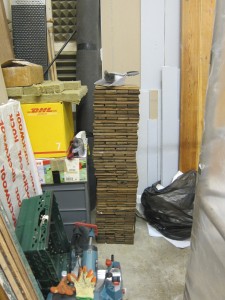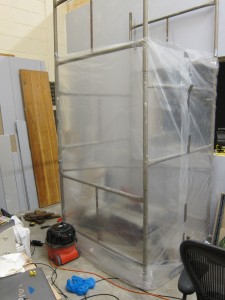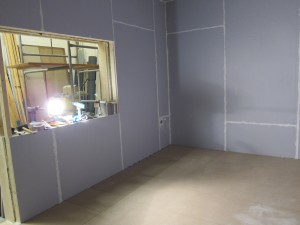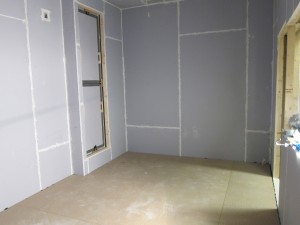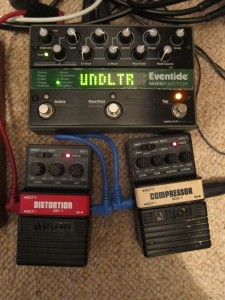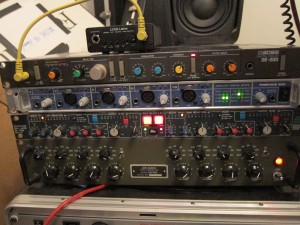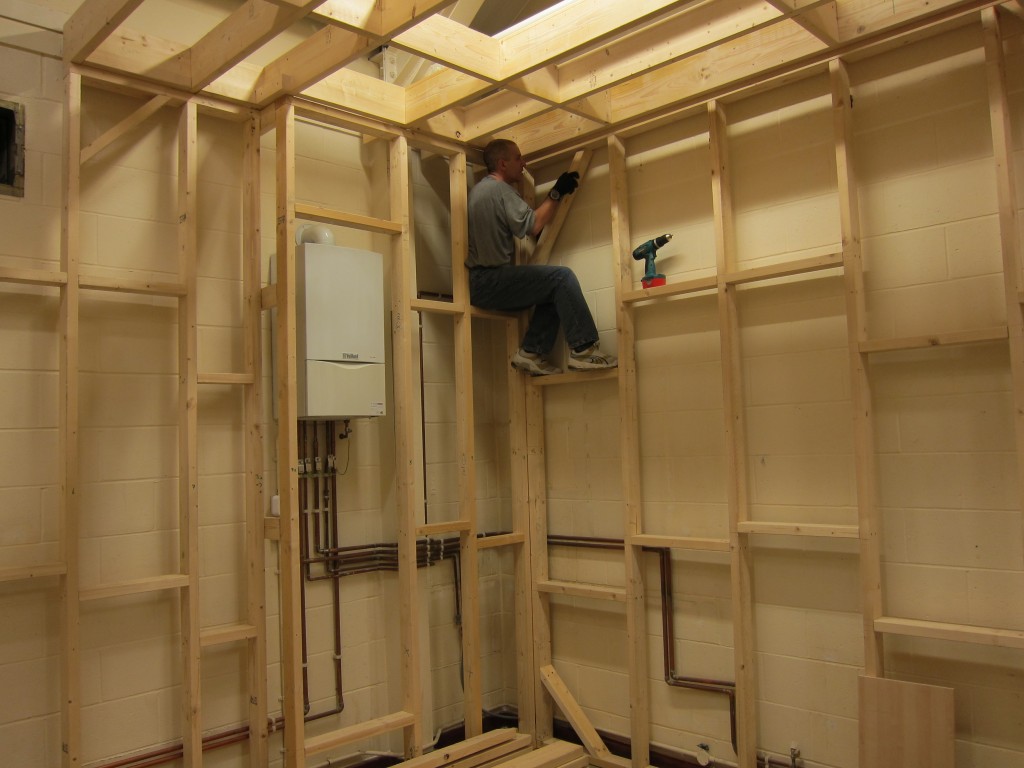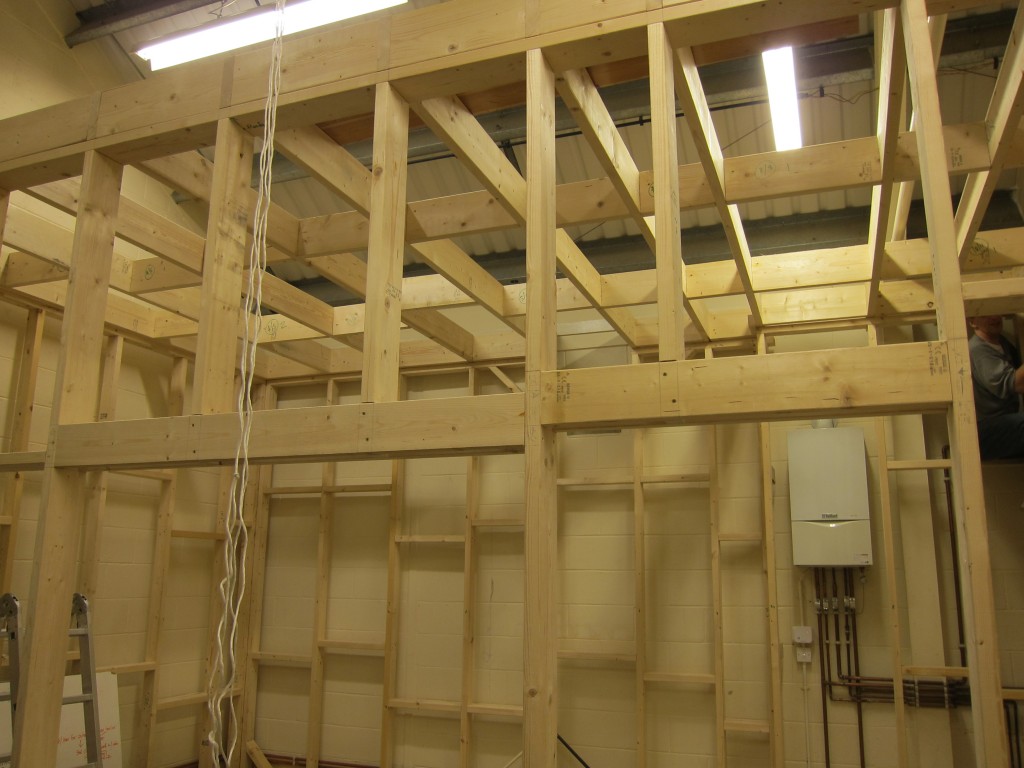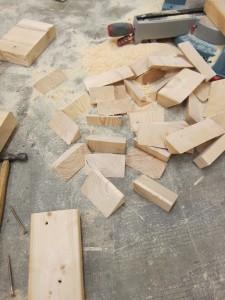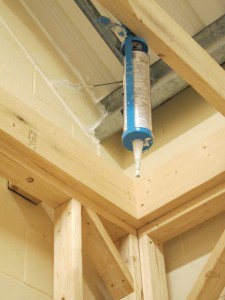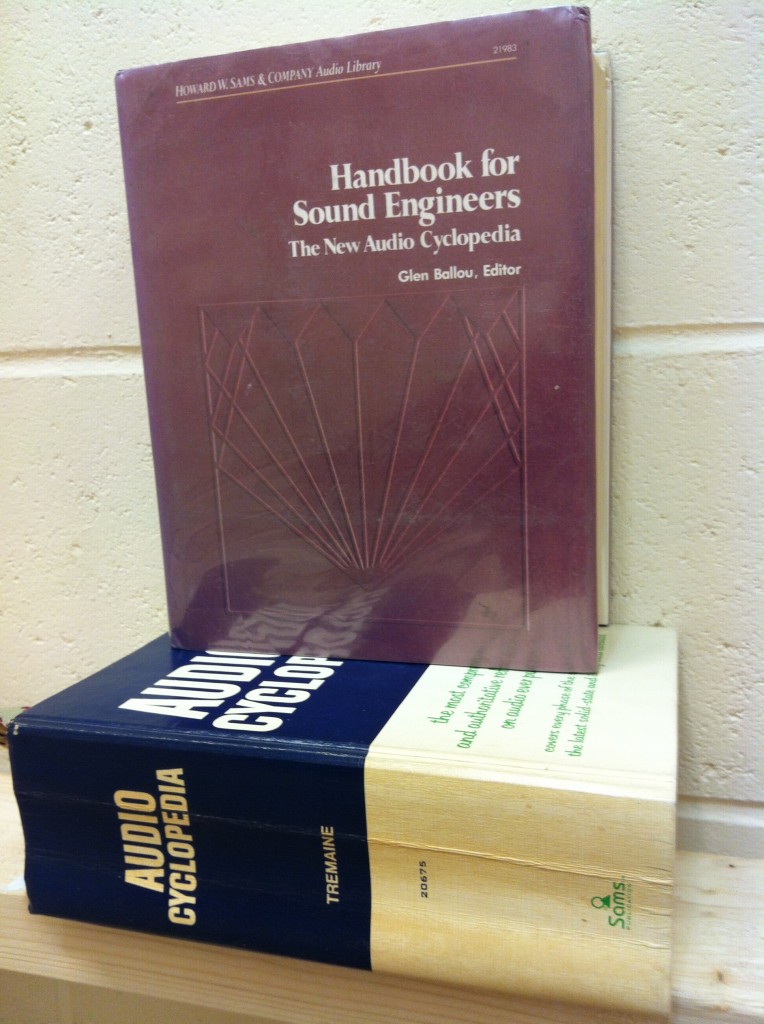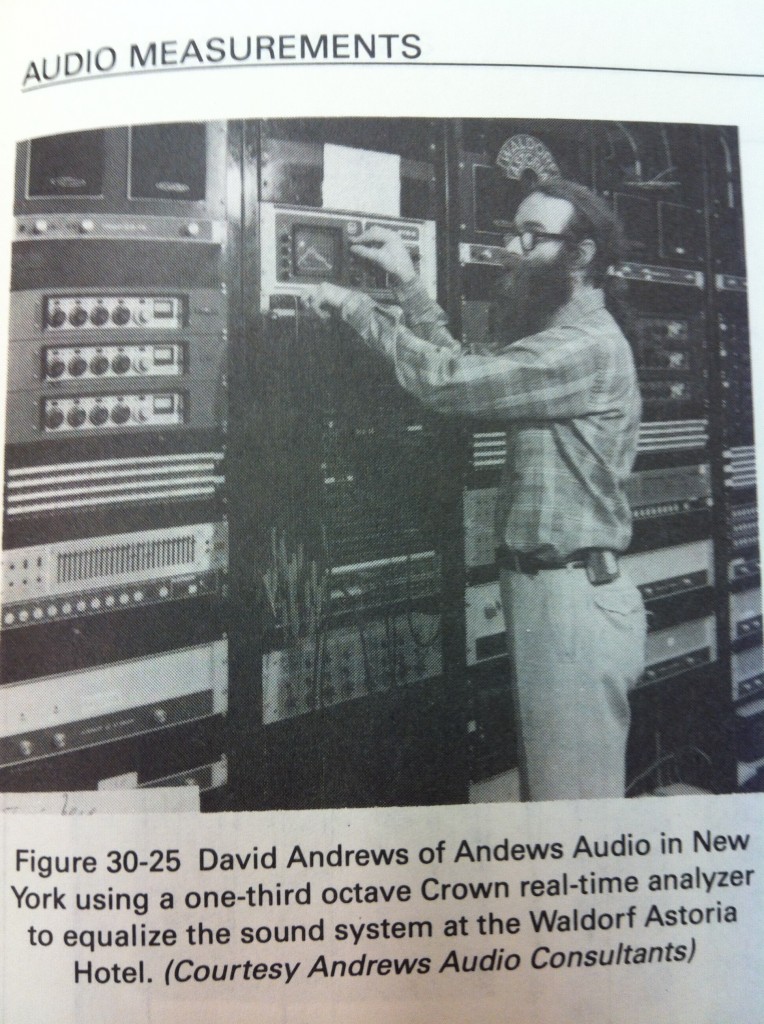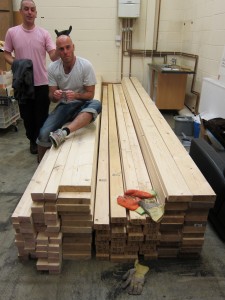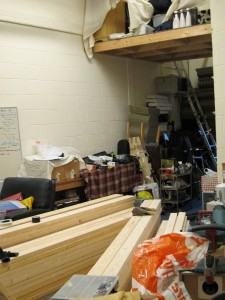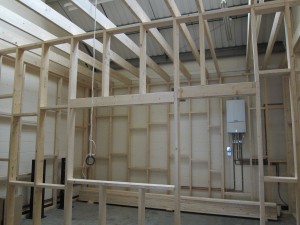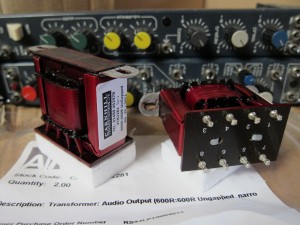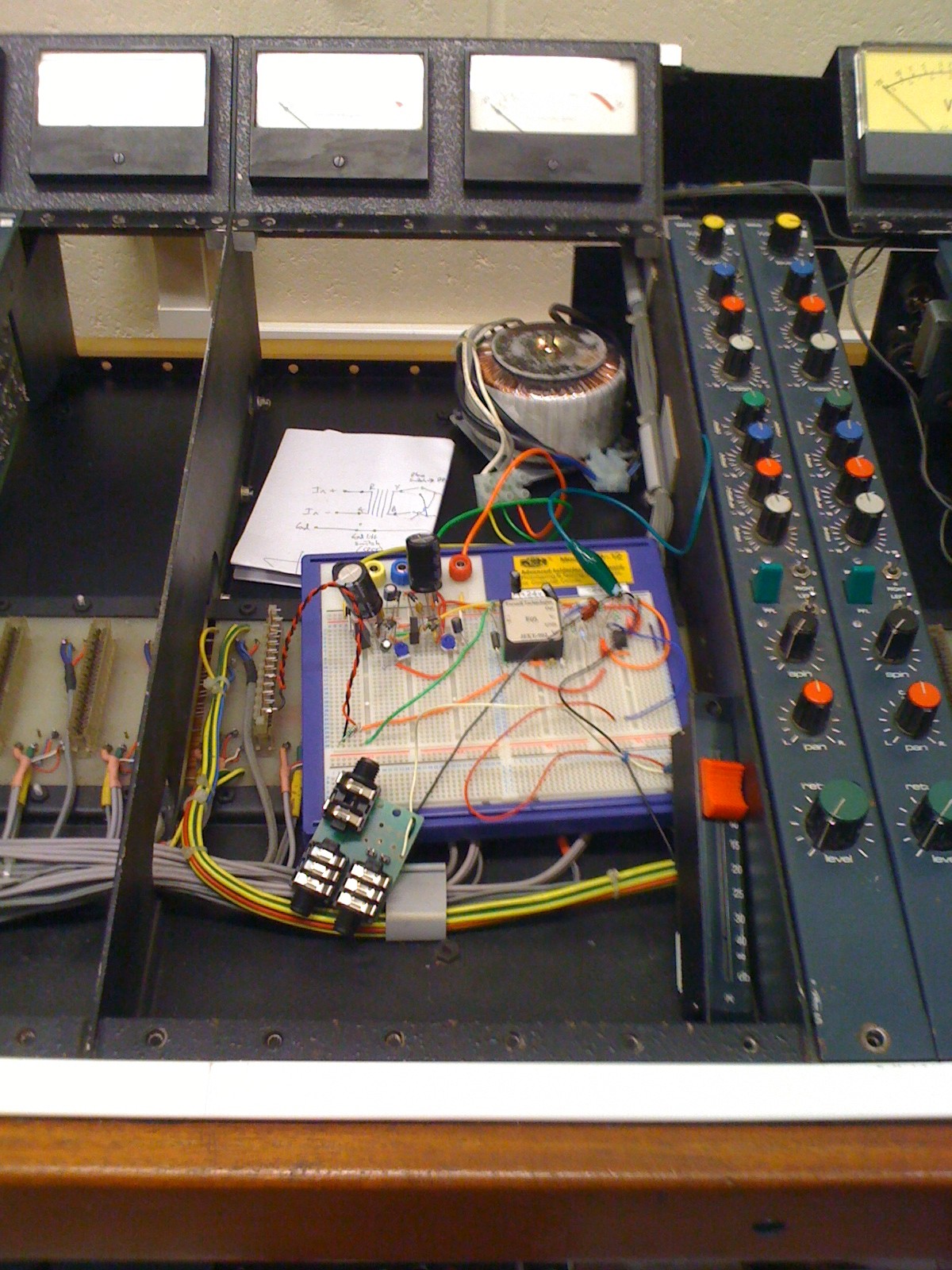It has been a while since I last scribed anything here, though I have often thought ‘ah ha, blog time’…but nothing. It’s late, I’m still awake and home alone so I might as well bash out a quick update.
The build of the control room at Sandpit Studio has been coming along, though my time spent on the project has been split with working (mostly making samples for Future Music and Computer Music, as well as the odd review/article thing and even more rare recording sessions) and being with my baby daughter. As of this moment the two isolation shells are up and sealed, the basic floated floor is in (rock wool, plasterboard and T&G chipboard) and the air extraction system is going in. The final floor will be parquet which has been reclaimed and is currently being trimmed of its old bitumen layer, which is probably the least pleasant task of the build so far.
Tomorrow the glazing will be delivered, which is two 1m x 1.5m panes of Optilam Phon laminated acoustic glass – one 10.8mm thick and the other 8.8mm thick. The tricky task is to build the two angled frames that will hold them along with all the decoupling shenanigans that goes with studio windows. It’s time to get the router out and cut some super straight channels. Alongside this ‘beyond-my-paygrade’ job I will be installing the two door casings for the partially glazed fire doors, again keeping the decoupling techniques to the fore as well as trying to get it all millimetre perfect. In the meantime, here are a couple of photos of the room as it stands…
Though I won’t be using the boiler in my unit it needs to be left running for the unit next door and accessible for servicing, thus the hatch. The photo above show the two hatches in the first isolation layer – I have yet to make and install the inner isolation hatch, which will be a hinged door. The whole room will be fitted with a control layer frame to house and support the various acoustic treatments (diffusors, bass traps and absorbers), storage and recessed bench at the back of the room, air extraction/inlet ducting and mains/audio cable runs.
My absurd plan is to have the floor finished, the A/C and ventilation fitted and running, the mains AC dropped in and the doors/window fitted by Christmas so I can move the desk, workstation, monitors and some outboard in. This will allow me to have a couple of weeks off before starting the acoustic testing that will decide the exact treatment that will be fitted. I have a basic plan, but I really need to hear/see how my basic modelling predictions work out before continuing, as I could be a total dunce and have just not noticed. I am also desperate to move out of my daughter’s bedroom-to-be as it is now almost impossible to move around in due to the piles of desk modules, guitars/basses, pedals, rackmount gear, patch bays, monitors and computer stuff. It is also the room that the reusable nappies are dried in…mmmm, a fragrant accompaniment to editing and mixing.
Obviously a few bargains have been had since I last posted here, and here are some highlights.
The Eventide ModFactor is a whole bag of fun, as well as offering up a massive range of modulation effects, from the subtly tasteful to the completely f*@$ed. The fact that it has independently switchable I/O levels (instrument or line) makes it a useful stereo DI/reamper too. I have been using an Arion Stereo Chorus (the oddly sought after SCH-1) since I somehow managed to sneak it off my brother two decades ago and I love it, so recently I decided, like all pedal addicts, to collect more of the range. For a total sum of £21 I have added the SCO-1 stereo compressor and the SDI-1 stereo distortion. These are by no means hi-fi, but they have already proved themselves useful for guitar, synth and reamping duties. You can never have enough pedals. Never ever. On the subject of reamping, I managed to pick up, for a criminally low price, the Little Labs Redeye DI/reamp box. This is a top quality passive box that has seen constant usage since I got my grubby mitts on it (grubby from trimming bloody parquet flooring!). The adjustable reamp output makes feeding pedals a doddle, especially things like my Mu-Tron IIIs, EH Poly Phase and Doctor-Q which are amplitude dependent. In the photo this is sat on top of the 12-bit beast that is the Boss DE200 digital delay. I bought this off a friend who was downsizing his collection without hesitation as I have been coveting it since it was in a studio we shared some years ago. It’s crunchy and cranky but you can dub-out with it for ages in a way that posh delays and fiddly virtual ones never do. I may give it an overhaul soon as most of the LEDs only work when you hit it, and that’s just not a nice way to treat a unit. I have always wanted a BSS DPR402 compressor and as usual I have waited years for a bargain, but when it appeared I snatched it right up. As most of my outboard is packed away in storage this has been my analogue path comp for drums, guitar and synths (it’s not a great choice for bass). Below that in the photo is the JDK Audio R24 EQ, which I reviewed when it first came out under the shortlived API ‘Arsenal Audio’ brand (JVC claimed copyright on the name for some car radio bullshit – like people were going to get confused?!). Anyway, I really liked it but couldn’t afford it at the time. Sure enough one winked at me at less than half price – what could I say? Also I am lacking in outboard EQ so it’s needed – I have a Gyraf diy Calrec EQ in the pipeline as well to start filling this gap.
The other significant purchase was a Coles 4038 ribbon mic in mint condition which can now keep my refurbished original STC 4038 company. I used them on a drum recording for the Gallow Birds’ Ghost Smoke album project the day after I received the Coles. They were on overhead duty whilst a Royer R121 captured the kick and a Sennheiser MD441 nestled in with the snare. The two 4038s on their own sound beautiful, but rolling in a touch of the Royer kick fattens things up nicely and the 441, again just rolled in a tad, helps pick up the snare. Dust with a little compression (or imperial shitloads) and a sprinkle of HF and there you have it. The excellent drumming also helped (thanks Alex Lupo).
Enough of this, I don’t want to come over all Gearslutz…I’ll be A/Bing my pants next and talking about how Rupert Neve always darns his socks with transformer winding wire or something…

